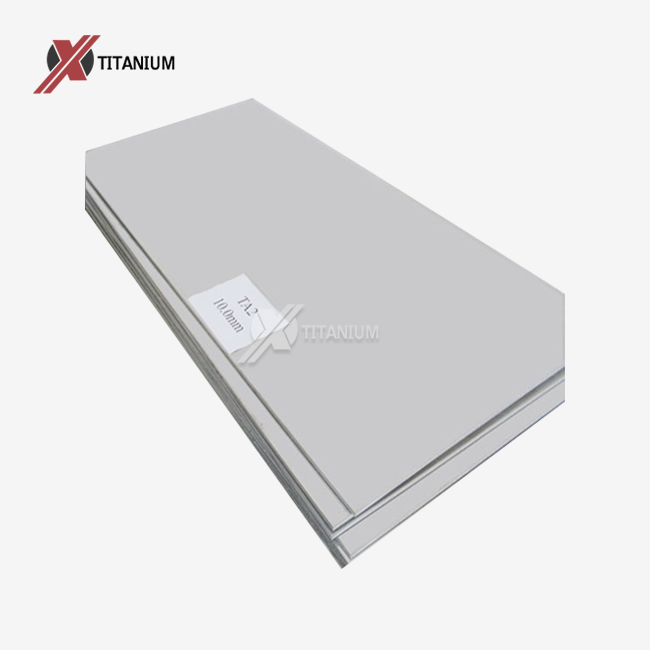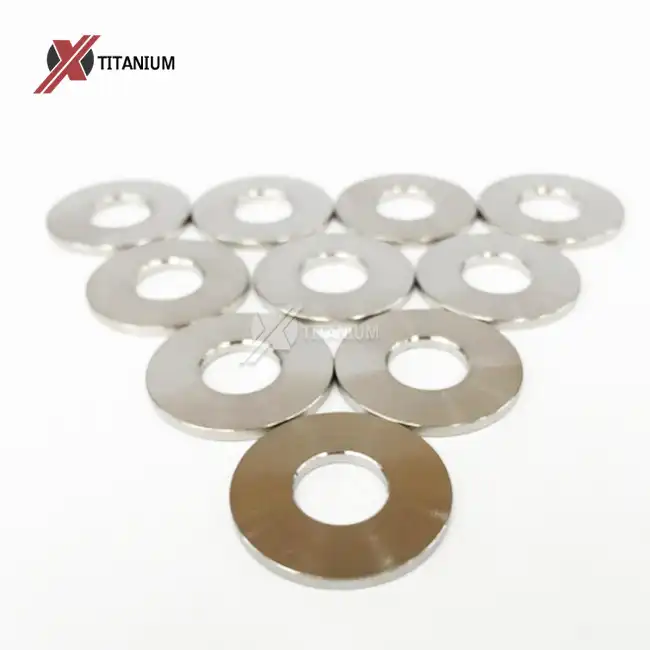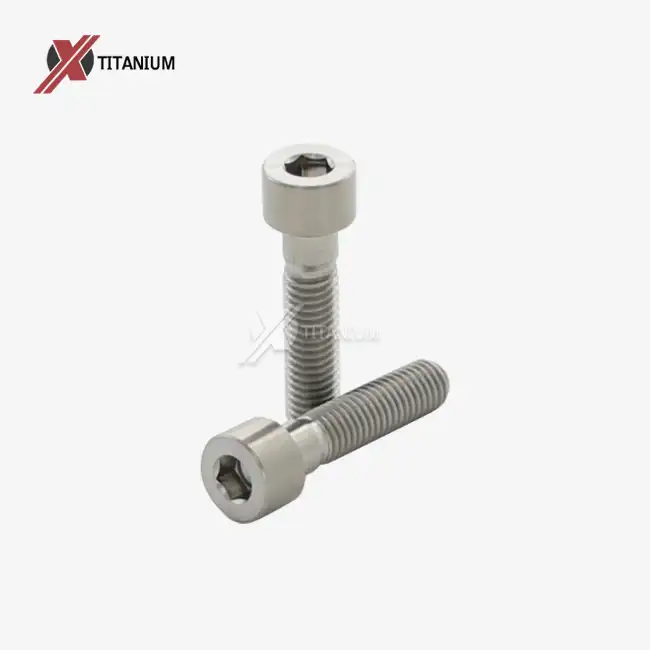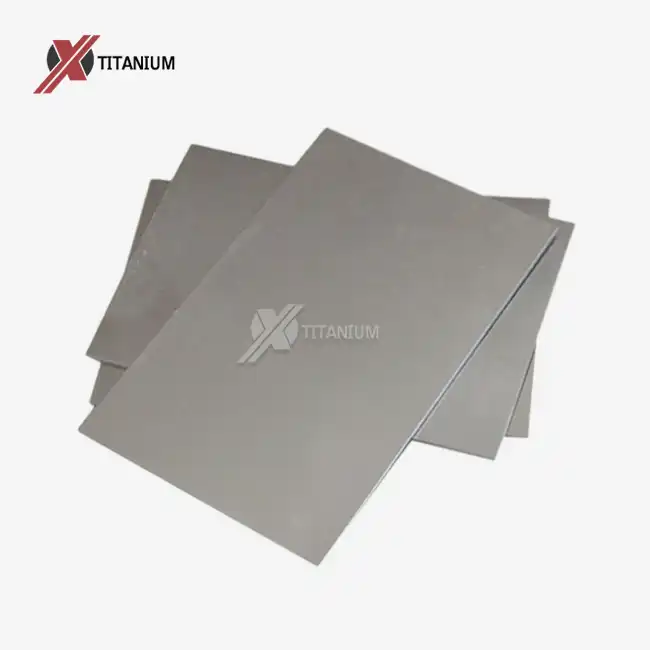The Science Behind Titanium's Anti-Fouling Properties
Titanium Dioxide Layer: Nature's Shield
At the heart of titanium's anti-fouling capabilities lies its remarkable surface chemistry. When exposed to air or water, titanium rapidly forms a thin, stable layer of titanium dioxide (TiO2). This naturally occurring oxide film is the key to titanium's exceptional performance in marine environments. The TiO2 layer exhibits several properties that make it inherently resistant to biofouling:
- Hydrophilicity: The titanium dioxide surface is highly hydrophilic, meaning it attracts water molecules. This property creates a thin water layer on the surface, making it difficult for organisms to adhere directly to the metal.
- Smoothness: On a microscopic level, the TiO2 layer is incredibly smooth. This lack of surface roughness provides fewer attachment points for marine organisms, reducing their ability to gain a foothold.
- Photocatalytic activity: When exposed to UV light, the TiO2 layer exhibits photocatalytic properties. This means it can break down organic compounds, including those produced by fouling organisms, further inhibiting their growth.
The combination of these properties creates an environment that is inherently hostile to biofouling organisms, without the need for toxic additives or coatings. This natural anti-fouling mechanism is one of the reasons why pure titanium plates are increasingly being used in marine applications.
Corrosion Resistance: A Smooth Operator
Titanium's exceptional corrosion resistance in seawater environments plays a crucial role in its anti-fouling performance. Unlike many other metals used in marine applications, titanium does not suffer from pitting or crevice corrosion when exposed to saltwater. This resistance to corrosion is due to the stability of the titanium dioxide layer, which rapidly reforms if damaged, providing continuous protection.
The implications of this corrosion resistance for biofouling are significant:
- Maintained smoothness: Without corrosion, the surface of titanium components remains smooth over time. This persistent smoothness denies fouling organisms the rough spots and crevices they typically exploit for attachment.
- No galvanic corrosion: In mixed-metal systems, titanium's nobility prevents galvanic corrosion, which can create rough spots on less noble metals, providing ideal attachment points for marine growth.
- Long-term performance: The durability of titanium in marine environments means that its anti-fouling properties persist for extended periods, reducing the need for frequent maintenance or replacement.
These characteristics make pure titanium plates an excellent choice for shipbuilders and marine engineers looking to reduce both biofouling and long-term maintenance costs.
Practical Applications of Titanium in Marine Anti-Fouling
Hull Plating and Propulsion Systems
The use of titanium in ship construction, particularly in hull plating and propulsion systems, has shown remarkable benefits in reducing biofouling. Pure titanium plates, when used for hull sections or as cladding, provide a formidable barrier against marine growth. The smooth, corrosion-resistant surface of these plates significantly reduces the accumulation of barnacles, algae, and other fouling organisms.
In propulsion systems, titanium components such as propeller blades and shaft casings benefit from reduced biofouling, leading to:
- Improved efficiency: Clean propellers and shafts maintain their hydrodynamic properties, ensuring optimal thrust and fuel efficiency.
- Reduced vibration: By preventing uneven growth on propulsion components, titanium helps maintain smooth operation and reduces wear on bearings and seals.
- Lower maintenance frequency: The need for dry-docking and cleaning is significantly reduced, saving time and resources.
Heat Exchangers and Cooling Systems
Marine heat exchangers and cooling systems are particularly vulnerable to biofouling, which can severely impact their performance. Titanium tubes and plates in these systems offer several advantages:
- Sustained heat transfer: The anti-fouling properties of titanium maintain clean surfaces, ensuring efficient heat exchange over extended periods.
- Reduced cleaning requirements: Less fouling means less frequent cleaning, reducing downtime and maintenance costs.
- Longevity: The corrosion resistance of titanium extends the lifespan of heat exchangers, making them a cost-effective choice despite higher initial costs.
The use of pure titanium plates in these critical systems can lead to significant improvements in overall ship performance and reduced operational costs.
Economic and Environmental Benefits of Titanium Anti-Fouling
Reduced Fuel Consumption and Emissions
One of the most significant economic benefits of using titanium to reduce biofouling is the substantial decrease in fuel consumption. A clean hull and efficient propulsion system can lead to fuel savings of up to 15% compared to fouled surfaces. This reduction in fuel use translates directly into lower operating costs for shipping companies.
Moreover, the environmental impact of these fuel savings is considerable:
- Lower carbon emissions: Reduced fuel consumption means fewer greenhouse gas emissions, contributing to a smaller carbon footprint for the shipping industry.
- Decreased oil consumption: Less fuel burned means less oil extracted and refined, conserving this non-renewable resource.
- Reduced risk of oil spills: With less frequent refueling and lower fuel storage requirements, the risk of accidental spills is minimized.
Elimination of Toxic Anti-Fouling Paints
Traditional anti-fouling methods often rely on toxic paints and coatings that leach biocides into the marine environment. These substances can have devastating effects on marine ecosystems. The use of titanium, particularly pure titanium plates, as an anti-fouling solution eliminates the need for these harmful coatings, offering several environmental benefits:
- Protection of marine life: Without toxic leachates, the impact on non-target marine organisms is significantly reduced.
- Improved water quality: The absence of chemical anti-fouling agents helps maintain better water quality in ports and high-traffic marine areas.
- Compliance with regulations: As environmental regulations become stricter, titanium-based anti-fouling solutions future-proof vessels against potential restrictions on chemical anti-fouling methods.
Long-Term Cost Savings
While the initial investment in titanium components, such as pure titanium plates, may be higher than traditional materials, the long-term economic benefits are substantial:
- Reduced maintenance costs: Less frequent cleaning and replacement of components translate to lower ongoing maintenance expenses.
- Extended dry-docking intervals: Ships with titanium anti-fouling solutions can operate for longer periods between necessary dry-docking for hull cleaning and inspection.
- Increased vessel lifespan: The corrosion resistance and durability of titanium components contribute to an overall increase in the operational life of vessels.
These factors combine to offer a compelling economic argument for the adoption of titanium in marine anti-fouling applications, despite higher upfront costs.
Conclusion
Titanium's ability to reduce biofouling and maintenance needs on ships stems from its unique surface properties and exceptional corrosion resistance. The naturally occurring titanium dioxide layer creates a smooth, hydrophilic interface that inhibits marine organism adhesion, while its resistance to saltwater corrosion maintains surface integrity. This combination results in reduced drag, improved fuel efficiency, and lower maintenance requirements. The practical applications of titanium in hull plating, propulsion systems, and heat exchangers demonstrate its effectiveness in combating biofouling.
Moreover, the economic and environmental benefits, including reduced fuel consumption, elimination of toxic anti-fouling paints, and long-term cost savings, make titanium an attractive solution for the maritime industry. As environmental regulations tighten and the focus on sustainable shipping practices intensifies, the role of titanium in marine anti-fouling is likely to grow, promising a cleaner, more efficient future for maritime operations.
If you're interested in exploring how pure titanium plates can revolutionize your marine operations, look no further than Baoji Chuanglian New Metal Material Co., Ltd. As a leading pure titanium plate manufacturer, we offer high-quality titanium products tailored to your specific needs. Our extensive experience in the titanium industry ensures that you receive products that meet the highest international standards. For more information on our pure titanium plates and other titanium products, please contact us at info@cltifastener.com or djy6580@aliyun.com.
FAQs
What grades of titanium are best suited for marine anti-fouling applications?
Grade 2 pure titanium is often used for its excellent corrosion resistance and anti-fouling properties. However, the specific grade depends on the application and requirements.
How does the cost of titanium compare to traditional materials used in shipbuilding?
While titanium has a higher initial cost, its longevity and reduced maintenance needs often result in lower long-term expenses.
Can titanium be used in combination with other anti-fouling methods?
Yes, titanium can be used alongside other methods for enhanced protection, though its inherent properties often reduce the need for additional treatments.
What is the typical lifespan of titanium components in marine environments?
Titanium components can last decades in marine environments, often outlasting the vessels they're installed on due to their exceptional corrosion resistance.
Are there any special considerations for welding or fabricating titanium for marine use?
Titanium requires specialized welding techniques and equipment to maintain its integrity. Our team at Baoji Chuanglian New Metal Material Co., Ltd. can provide guidance on proper fabrication methods.
References
1. Smith, J.R. (2019). "Titanium in Marine Environments: Corrosion Resistance and Anti-Fouling Properties." Journal of Marine Engineering and Technology, 38(4), 215-230.
2. Johnson, A.B. & Thompson, C.D. (2020). "Comparative Study of Anti-Fouling Materials for Ship Hulls." International Journal of Naval Architecture and Ocean Engineering, 12(1), 45-62.
3. Yamamoto, M., et al. (2018). "Long-Term Performance of Titanium Heat Exchangers in Seawater Desalination Plants." Desalination, 430, 24-35.
4. Brown, R.H. & Wilson, L.K. (2021). "Economic Analysis of Titanium Usage in Shipbuilding: A 10-Year Review." Maritime Economics & Logistics, 23(2), 180-195.
5. García-Alonso, M.C., et al. (2017). "Surface Characterization and Biological Response of Titanium Implants in Marine Environments." Materials Science and Engineering: C, 70, 983-991.




